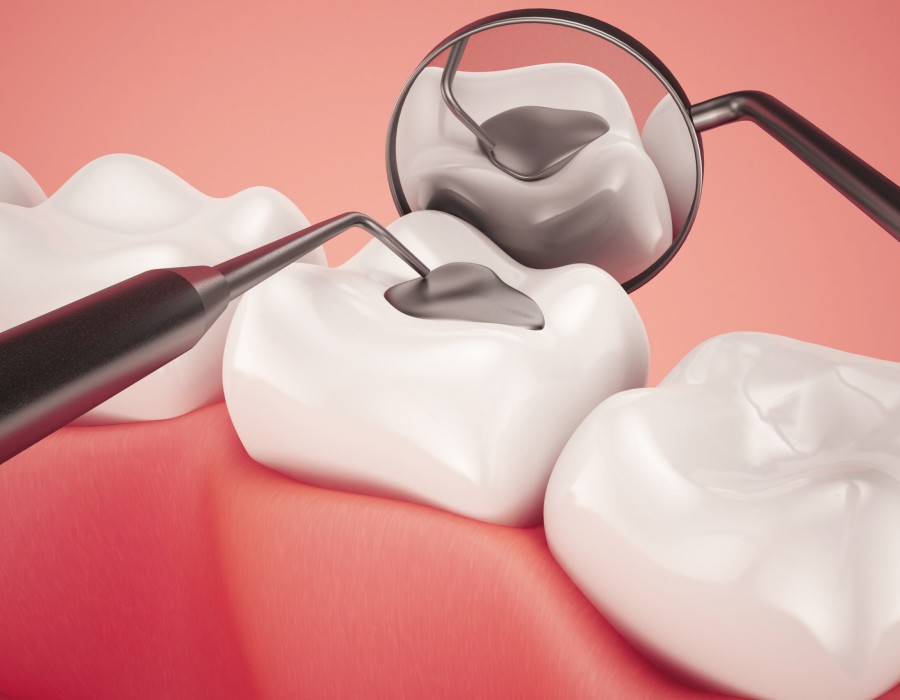When it comes to dental restorations, choosing the right type of tooth filling is more than just a matter of appearance—it’s also about durability, function, and long-term value. The two most common materials used for fillings are silver (amalgam) and white (composite resin), each offering its own benefits and drawbacks. Understanding the key differences between them can help you make an informed decision. If you're evaluating your options and wondering about Tooth Filling Cost in Dubai, this guide provides a balanced comparison to help you weigh your choices.
Understanding the Materials: Silver vs. White Fillings
Silver Fillings (Amalgam):
Silver fillings have been used in dentistry for over a century. They are made from a mixture of metals, including silver, mercury, tin, and copper. Known for their strength, amalgam fillings are commonly used on the back teeth, where the chewing pressure is greatest.
Advantages of Silver Fillings:
- Durability: These fillings are extremely durable and can last 10-15 years or more.
- Strength: Ideal for molars and teeth under heavy stress.
- Less Technique-Sensitive: The procedure to place silver fillings is generally quicker and easier, making them a popular choice for larger cavities.
Disadvantages of Silver Fillings:
- Appearance: The metallic color is easily noticeable and may not be suitable for visible areas.
- Potential Sensitivity: Some people report temporary sensitivity to hot and cold.
- Expansion Over Time: Amalgam can expand slightly, which may lead to cracks in the tooth.
White Fillings (Composite Resin):
White fillings are made of a tooth-colored resin material that blends seamlessly with your natural teeth. This makes them a preferred option for front teeth or any area visible when you smile.
Advantages of White Fillings:
- Aesthetic Appeal: Blends in with the natural tooth color, making it virtually invisible.
- Bonding Ability: Composite resin bonds directly to the tooth structure, helping to support the remaining tooth.
- Versatile Use: Suitable for both front and back teeth in many cases.
Disadvantages of White Fillings:
- Less Durable: Typically last 5-10 years, though newer materials are improving.
- More Technique-Sensitive: The placement process is more detailed and may take longer.
- Higher Cost: Often more expensive due to materials and time involved.
Factors That Influence Tooth Filling Costs
While comparing silver and white fillings, it’s important to consider the factors that influence the overall cost beyond just the material.
- Size and Location of the Cavity:
- Larger cavities or those in difficult-to-reach areas may require more time and material, increasing the cost.
- Material Used:
- White composite fillings are generally more expensive than silver amalgam because of their aesthetic value and the complexity of the procedure.
- Time and Skill Required:
- Composite fillings require a dry working environment and careful layering, which often means longer appointments and higher fees.
- Longevity and Maintenance:
- Though silver fillings last longer, white fillings offer a better aesthetic and may reduce the risk of further decay by bonding to the tooth.
- Additional Procedures:
- In some cases, placing a composite filling might require additional steps like tooth isolation or layering techniques, which can also impact the cost.
Long-Term Considerations
Choosing between silver and white fillings isn’t only about the initial cost. Consider the long-term value and personal preferences.
- Appearance: If the filled tooth is visible when you speak or smile, many patients find the natural look of white fillings to be worth the extra expense.
- Durability: If the filling is in a high-pressure area like the molars, silver may offer more durability and fewer replacements over time.
- Allergies and Sensitivities: Although rare, some people may have sensitivities to the metals used in amalgam.
- Environmental and Health Concerns: Composite materials are mercury-free, which may appeal to those concerned about amalgam’s mercury content, even though studies have shown it to be safe for most individuals.

Making the Right Choice for You
Your decision will likely come down to balancing cosmetic goals, functional needs, and budget. If your priority is a natural-looking smile and the filling is in a visible spot, composite resin might be your best bet. On the other hand, if durability and cost-effectiveness are more important and the tooth is less visible, amalgam might be the more suitable choice.
Modern dental practices are increasingly using advanced composite materials that are both strong and attractive, narrowing the gap in durability between white and silver fillings. Nonetheless, discussing your preferences and concerns with a dental professional is the best way to determine the most suitable option for your specific situation.
If you're planning to get a filling and want to understand more about the Tooth Filling Cost in Dubai, understanding these factors will put you in a stronger position to make a confident decision.
Final Thoughts
Tooth fillings are a common and essential part of dental care, but not all options are created equal. Whether you lean toward the timeless reliability of silver fillings or the modern appeal of white ones, knowing the differences will help you invest wisely in your oral health. While the appearance and performance of each material are important, your comfort and confidence should ultimately guide your decision. Before finalizing your choice, it’s helpful to research and understand the Tooth Filling Cost Dubai so you can plan effectively and prioritize both your health and your budget.





Comments